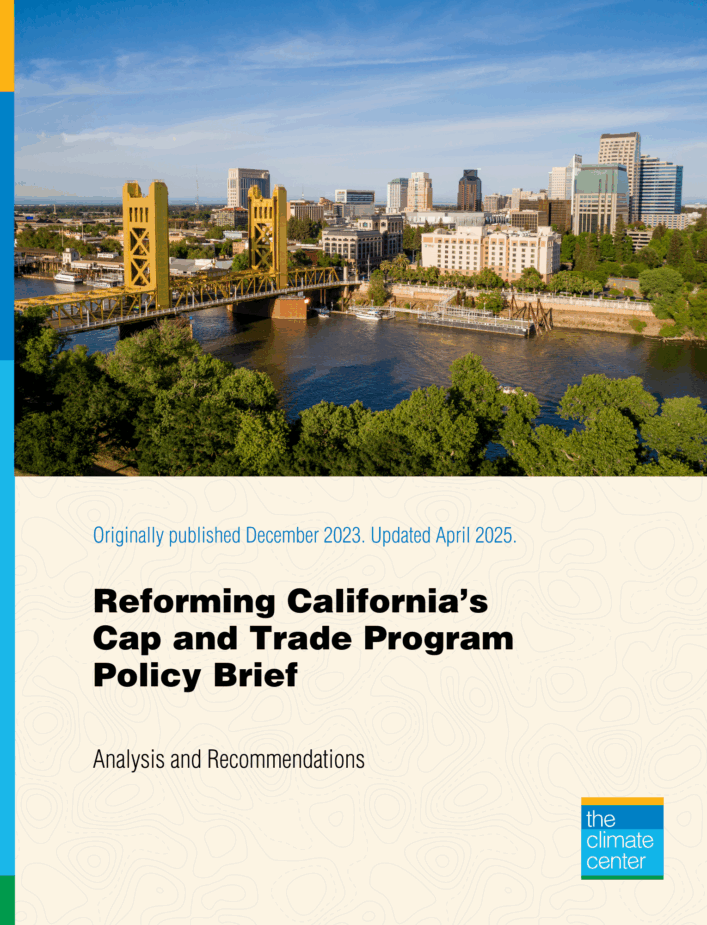The California Cap and Trade Program plays a pivotal role in the state’s efforts to reduce greenhouse gas emissions. The program is currently under review to incorporate updated emissions inventory data and the increased emissions reduction targets adopted in the 2022 Scoping Plan. The revised regulations will determine emissions targets, budgets, and potential reforms for the 2026 to 2030 compliance period. In addition, the state legislature must reauthorize the program to continue beyond 2030, when current program authority expires.
The Climate Center recommends four essential reforms to strengthen California’s Cap and Trade Program. These improvements will enable the program to more effectively advance state climate goals, increase affordability for all Californians — especially working-class and lower-income communities — and build resilience to increasing climate extremes.
Download the one-page summary of recommendations (PDF)
Summary of Key Recommendations
- Eliminate free allowances that subsidize the fossil fuel industry and increase climate pollution. We recommend a reduction and eventual phaseout of the subsidies provided to oil and gas corporations through free allowances. Redirecting these funds will enable greater investment in carbon-free technologies and help address affordability challenges during the transition to a clean energy economy.
- Implement progressive cash rebates. We urge using Cap and Trade revenue to more effectively address energy affordability via direct, progressive cash rebates prioritizing low- and middle-income Californians. We recommend policymakers restructure the existing climate credit to increase its impact for those who need it the most.
- Eliminate offsets as compliance instruments. We recommend eliminating or phasing out the use of offsets as compliance instruments. Instead, additional revenue generated for the Greenhouse Gas Reduction Fund (GGRF) should be directed toward cost-effective emissions reduction projects within California, such as those focused on natural and working lands. To further protect communities overburdened by pollution — particularly those in non-attainment areas — we also recommend placing facility-level emissions caps to ensure that local air quality continues to improve.
- Establish an Emissions Containment Reserve. We urge policymakers to adopt an Emissions Containment Reserve (ECR), which addresses the oversupply of allowances by automatically withholding them when prices fall below a set threshold. An ECR would restore balance to the carbon market and reinforce the price signal needed to drive emissions reductions.
We welcome comments, questions, and feedback about this policy brief. Please reach out to us at info@theclimatecenter.org.

Jasmin Ansar
Senior Climate Researcher, The Climate Center
